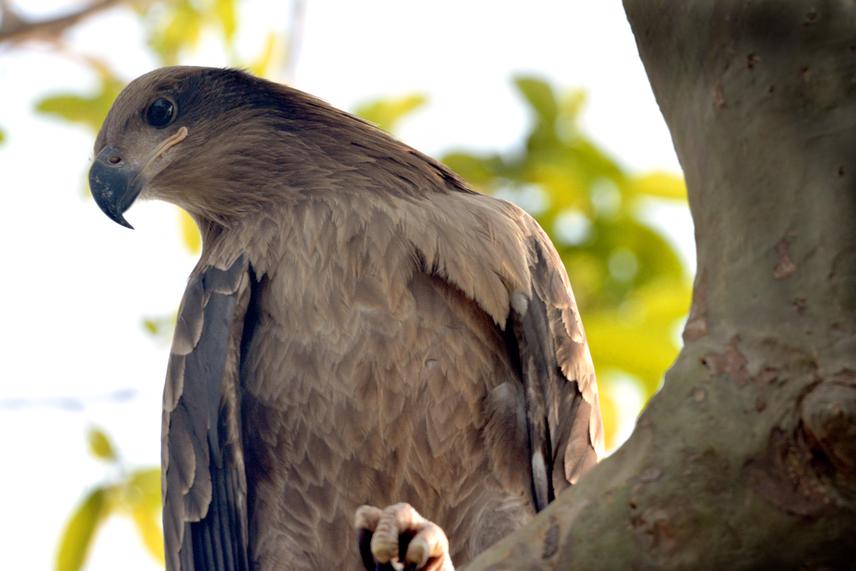Farhad Ahsan Pavel
Pallas’s Fish-eagle is currently listed as Globally Endangered (Birdlife International, 2018) on the basis that it has a small, declining population as a result of degradation and disturbance of wetlands and breeding sites throughout its range. The following activities has been proposed for conservation planning of Pallas’s Fish Eagle in the north-east region in Bangladesh: to identify the current nesting sites, breeding ecology, improve overall breeding success, feeding preference, identify threats and recommend conservation measures to prevent further population reduction in order to mitigate those threats in the study areas.

Pallas's Fish Eagle.
Land-use change is a major driver of biodiversity loss in Bangladesh, through habitat degradation and destruction. Wetlands and riverbanks host unique biodiversity even in areas with varying degrees of human utilization. Moreover, increased population pressure of Bangladesh has resulted conversion of natural wetlands into agricultural lands, commercial fisheries, encroachment and many other human activities creating intense pressure on resources available to native biota. A victim of this environmental degradation is the Pallas’s Fish-eagle (Haliaeetus leucoryphus), a globally threatened raptor. This breeding resident was earlier quite common in the Bangladesh in the freshwater wetlands and along the major rivers with regular nesting records (Birdlife International, 2009).
The objectives are
• Map current distribution of nesting sites and range of Pallas’s Fish-eagle;
• Study the breeding ecology and measure overall breeding success;
• Determine factors driving land-use changes by different stakeholders and identify other threats to Pallas’s Fish-eagle.
• Describe and quantify the diet components consumed by the Fish Eagle in order to identify feeding preferences.
• Awareness campaigning with local stakeholders about the conservation of Pallas’s Fish Eagle.
By doing nests surveys with the help of local people interview we can find complete comparative data like where the previous nests were located, existing nests and also some new nests.
The main threats for young juvenile eagle to survive we got followings facts:
(1) Dropping young child from the nest in strong thunder storm and when they try to do their first fly and
(2) Parents of the eagle couldn’t treat or recover the eagle from the nest again and so on.
So, If the young chicks fall once from the nests then there are several possibilities to fail to survive because of several threats like consecutive rain, get trapped into fishing net which is set by local young boys for fishing, getting muddy in lakes contains low water or they can also be drowned in those small lakes. These are the first time we involve local people to recover the chicks of Pallas’s Fish Eagle since we found most of the chicks are died from the storm in the first Bengali month boishakh same time of English calendar year April and May. Our team will do employ local people to recover the chicks when they drop for heavy storms in two consecutive months. Because most of the nests we found `during our survey are very close (some nests are just top of the trees adjacent to their house) to human settlements. So, if we involve those people just adjacent to eagle nest in our chick recovery program from any natural calamities then we have the breeding success will be improved and finally it well be sound the reproduction of Pallas’s Fish Eagle population.